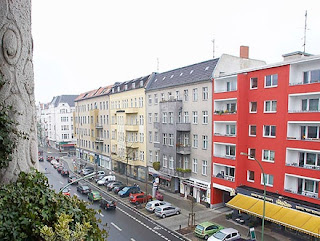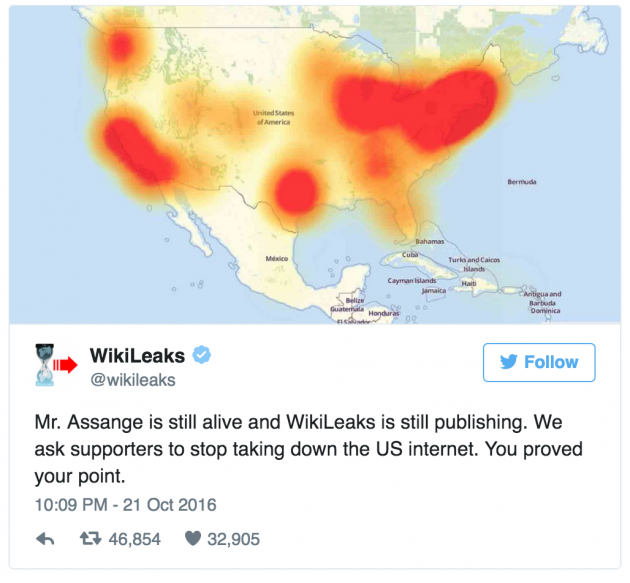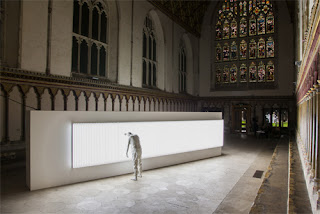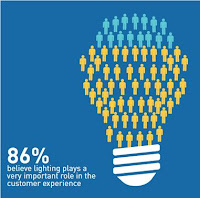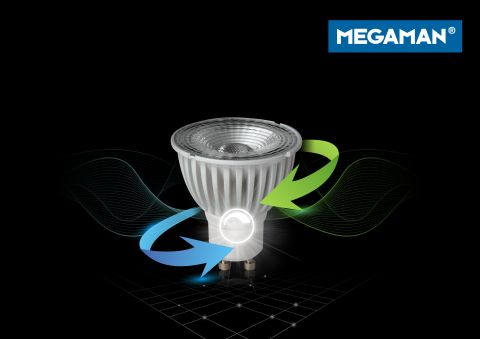 With the advent of LED lighting, the relationship between legacy dimming technology and LED lamps has become an uneasy one. Here MEGAMAN® shows how to overcome such difficulties.
With the advent of LED lighting, the relationship between legacy dimming technology and LED lamps has become an uneasy one. Here MEGAMAN® shows how to overcome such difficulties.
New for old?
One of the big areas for dimming problems comes when home owners decide to switch out all of their traditional lamps for LEDs, but don’t change the dimmers at the same time. This is largely down to the lack of public knowledge about the fact that trying to combine old and new technologies can lead to all kinds of issues.
The problems that can occur when new and old are combined include: lamp flicker, flashing, an inability to dim as low as required and failures with the LED and/or dimmer. Even if the LED lamps seem to initially respond well to dimming, over time, the use of LED light sources on a legacy dimmer can have longer-term implications that lead to call-backs, weeks or months after installation.
The root of the problem
Almost all legacy dimmers designed for incandescent light sources are leading edge or trailing edge dimmers that commonly use a TRIAC/transistor as the key control device. This chops out parts of the voltage and reduces power to the light source in order to achieve the dimming performance. Though these work with incandescent lamps, LED lamps have an internal filtering circuit that distorts the supply signal and can result in system oscillations that are observed as flickering or flashing.
As well as encountering flickering and variable dimming performance, in extreme cases incompatible dimmer switches cannot be turned on, or suddenly shut off, can burn out, or permanently damage the LED lamps. In addition, traditional dimmers have a minimum load requirement of 40W or 60W, something that causes problems when replacing them with low wattage LED equivalents.
GU10’s – the LED opportunity
With halogen directional reflector lamps being phased out across Europe from September 2016*, there will be an increased push from homeowners for LED replacements. With the advances in LED lighting technology, there are now a wide range of exceptional alternatives to halogen lamps.
However, dimmable LED GU10 lamps are complex pieces of engineering, as they have to house a transformer, as well as dimmable driver components. There are at present a lot of dubious dimmable LED replacement lamps on the market. As with most things, you get what you pay for. So avoid the lower end of the market and choose a trusted LED manufacturer.
MEGAMAN has just launched its new selection of GU10 lamps (that incorporate the company’s new Hybrid Reflector and U-DIM™ technology – see products here). Available in both the popular Economy range and Professional range, these lamps are compatible with the widest possible range of existing dimmers, whether they are leading-edge or trailing-edge.
Overcoming LEDs and Dimming Problems:
Solution One: When keeping the traditional dimmer
For those installers faced with a homeowner who wants to keep their dimmers, wants LEDs and yet doesn’t know what type of dimmer has been installed, a solution is now at hand. MEGAMAN has developed its new U-DIM™ technology, which takes the headache out of switching to dimmable LEDs.
MEGAMAN U-DIM dimmable LEDs are compatible with the widest range of existing dimmers, whether they are leading-edge or trailing-edge dimmers. With the mains voltage halogen reflector lamps being phased out in Europe from 1st September 2016, home owners will need new lamps to operate perfectly with their existing dimmers and this dimming solution is a giant step in that direction. U-DIM LEDs are easy to use and it is possible to ‘plug-and-play’ to upgrade a lighting scheme.
MEGAMAN U-DIM technology is offered as a standard feature on MEGAMAN Dimming LEDs and they offer superior performance and flicker-free dimming from 100% right down to just 5%.
Solution Two: When replacing with new LED dimmers
Dedicated LED dimmers are a good way to overcome many of the traditional dimmer/LEDs issues. This is because they use micro control units to monitor and eliminate waveform noise and distortion, generating a digital signal to the control component that creates a stable and clean chopped waveform. If these dimmers are combined with LED lamps that have been tested and approved for compatibility (this is usually found on the dimming and/or LED lamp manufacturer’s website) – see the MEGAMAN one here as an example, then smooth LED dimming is guaranteed from day one of installation.
Dimming LEDs Checklist:
- Buy dimmable LEDs from a brand you trust
They will have tested a wide variety of dimmers with their lamps and have more comprehensive dimming compatibility lists
- Trailing edge dimmers work best with LEDs
However, if the client doesn’t want to replace their leading edge dimmers, then use LEDs that have been proven to dim well with this technology, such as MEGAMAN U-DIM LEDs
- If in doubt, contact the LED manufacturer
Unsure of whether the dimmer and LEDs are compatible? Check with the manufacturer’s online compatibility list, or contact their team for more advice
*For more information on the halogen ban – visit www.planfortheban.eu
Visit Novel Energy Lighting to buy your Megaman U-DIM GU10 lamps today
dimmable led gu10 · led dimming · led GU10 · LED lamps · megaman gu10 · Megaman LED GU10 · megaman u-dim · Novel Energy Lighting · u-dim
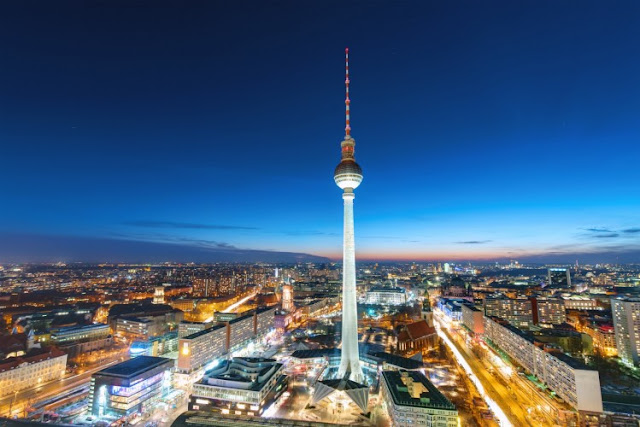 |
| Berlin is undergoing a street lighting revolution, 5,500 LED street lights have already been deployed, while a further 2,500 are being fitted this year. |
An intelligent wireless lighting network has been installed in the Wilmersdorf district of Berlin. The street lights are able to adjust their brightness based on real-time human presence.
The intelligent lighting minimises energy waste and acts to lower light pollution by ensuring that streetlights do not burn at full capacity throughout the night when the streets are often deserted.
The sensor network is a major breakthrough in Berlin’s street lighting renovation efforts. 5,500 LED street lights have already been deployed, while a further 2,500 are being fitted this year.
The innovative street lighting approach was praised by Christian Gaebler, permanent secretary at Berlin’s Senate Department for Urban Development.
‘Residents were continuously dissatisfied with the state of the area,’ commented Christian Gaebler, permanent secretary at Berlin’s Senate Department for Urban Development and the Environment.
‘Now for the first time we are testing a technical innovation that hasn’t existed anywhere in Berlin before, in order to improve the environment,’ Gaebler concluded.
The new LEDs in combination with sensor lighting controllers are allowing Berlin to save up to 80 percent of the energy normally spent on street lighting, whilst cutting maintenance costs.
Smart cities and the internet of things firm Tvilight worked on the project in conjunction with Trilux.
The intelligent network is managed remotely via Tvilight CityManager software, which enables the street lights to be controlled on an individual and group level, whilst delivering a host of analytics such as energy savings reports, failure notifications and traffic heatmaps.
berlin lighting · berlin street lighting · intelligent lighting · LED street · led street lights · Novel Energy Lighting · smart street lights · wireless lighting network
16
GDP due to lighting ‘must fall to tackle climate change’
Comments off · Posted by admin in LED
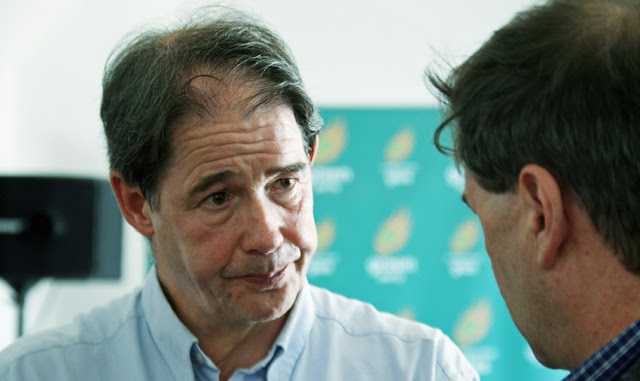 |
| Former Friends of the Earth chief Jonathan Porritt says we must accept a reduction of the historic proportion of GDP attributable to lighting and its associated energy requirements if we are to have an impact on greenhouse gas emissions. |
Delivering the inaugural annual lecture of the Worshipful Company of Lightmongers, he said: ‘We need to find ways of delivering increasingly sophisticated lighting services to the whole of humankind…in ways that cause considerably less impact, which probably needs less total economic activity.
‘Lighting is responsible for anywhere between 16 and 18 per cent of total electricity consumption in the world today, depending on how you do the calculations. So this is an absolutely massive part of the challenge. And although it’s rarely spoken about in those terms, people are beginning to understand that if we are going to make a difference to this story, we have to make a difference on lighting.’
Referring to the barrage of criticism from campaigners over the UK Government’s decision to approve a third runway at Heathrow Airport in London, he pointed out that aviation is responsible for 2 and 4 per cent of total global greenhouse gas emissions.
‘It’s relatively small in fact. When you compare lighting to these other big sectors, you can begin to see why it is people are focusing suddenly on the need to get lighting right.
‘What we know is that if you back right back before electricity to when people were using whale oil and tallow and candles, the contribution of the lighting industry as a whole has remained astonishingly constant over hundreds of years. It always contributes around 1.7 per cent of total GDP in any one year.
‘This rather amazing statistic was unearthed by Professor [Jeff] Tsao in the paper he wrote in 2010. And I quote: “New applications of increasingly efficient lighting technologies have consistently offset the energy efficiency gains from new lighting technologies almost exactly, leaving the portion proportion of global GDP attributable to lighting essentially unchanged for hundreds of years”.
‘So lighting’s always had this critical part in the economy of human societies at different points, at roughly 1.7 per cent of GDP.
’The problem is, we need to do something about that,’ he told a London audience of lighting executives. ‘I hope this isn’t going to upset people here but we kind of need to get that figure down. Because if we are to have a massive contribution from lighting to addressing this problem, we need to find ways of delivering increasingly sophisticated lighting services to the whole of humankind – not just the rich world – in ways that cause considerably less impact, which probably needs less total economic activity.’
However, he praised the lighting sector for its technological achievements, especially the development of the blue LED by Professor Shuji Nakamura and his team in the 1990s. Quoting the US Department of Energy, he said: ‘ “the widespread introduction of LEDs today will reduce electricity consumption by around 348 TWh by 2027, equal to the output of 44 large power plants, saving more that $30 billion at today’s power prices”. So you can see why this is going to have an impact on GDP. It takes $30 billion of economic activity out of the US economy, that translates through into the economic multipliers.
‘If the Indian government were to replicate the LED roll-out that it is currently undertaking in Pondicherry, it would reduce electricity demand by over 50 TWh and cut consumer bills by over $3 billion. These are just massive changes that are underway now.’
He also highlighted the president of Institute of Physics’ claim that the optimum use of LED lighting could reduce lighting’s share of the global electricity consumption in buildings from 19 per cent to 4 per cent. ‘That translates to the total electricity consumption of Europe.’
electricity demand reduction · energy efficient lighting · gdp · led GU10 · LED lamps · led lighting · led tubes · Novel Energy Lighting · power saving
New lighting to change view of Niagara Falls. PLUS: Cambridge University buys circadian lamps to wake sleepy students. AND: Can LED boost health benefits of cannabis? Lux Today November 8 2016.
circadian lamps · led and cannabis · led lighting · lux today · niagra falls lighting · Novel Energy Lighting
Hackers harnessing Internet of Things (IoT) devices, including smart lights, have crashed some of the world’s biggest websites including Spotify, PayPal and Twitter.
It is no secret, as revenues from LEDs fade, that the lighting industry is placing a big pile of gambling chips on the success of the Internet of Things, but the hack marks the second major security breach in as many months, suggesting IoT is not yet ready for the big leagues.
A handful of the world’s top websites were targeted during the attack, including The New York Times, CNN and Amazon, making this the most high profile attack to date and one aimed at disrupting the very fabric of the internet in the United States.
The attack was carried by hijacking thousands of IoT devices, which had previously been infected with malicious code allowing attackers to take control of them. The attackers were then able to perform a denial of service (DDoS) by getting the enslaved devices to flood the chosen websites with messages, causing them to crash.
While a claim of responsibility is yet to be made for the attacks, it has been claimed on Twitter that WikiLeaks were responsible.
A tweet issued by WikiLeaks after the DDoS attack on some of the world’s leading websites.
Earlier in the month American internet provider OVH was targeted in an attack that involved the manipulation of 150,000 IoT devices.
‘Companies are simply not doing enough to improve IoT security and there is a lack of awareness and a certain laziness in their attitude towards the issue,’ Ken Munro of ethical hacking firm Penetration testing and security services, which identifies weaknesses in internet security, told Lux.
‘Companies are simply not doing enough to improve IoT security and there is a lack of awareness and a certain laziness in their attitude towards the issue.’
The IoT powered onslaughts are worsening because of the release of the Mirai botnet source code into the public domain. The code contains the necessary information needed to hack into IoT devices and ultilise them for use in DDoS attacks.
Security experts are worried that IoT devices are being built upon outdated operating systems using code that has not been properly tested for security loopholes, which hackers will exploit. The devices are then being rushed to market.
Munro believes that IoT manufacturers need to act now to prevent much more serious security breeches in the future.
‘Governments are becoming more and more concerned about the security risks that IoT poses, and the UK, US and EU governments are even considering legislation to compel firms to act,’ Munroe concluded.
The US Congress, for example, is currently mulling installing some kind of consumer protection into law to protect IoT consumer’s privacy, although talks are still at a very early stage, calls to act though are likely to speed up after this latest attack.
ddos · internet of things · iot · iot security · led lighting · Novel Energy Lighting
The annual event, which is taking place at the Chaper House in Canterbury Cathedral, is one of the most important cultural and contemporary art events to be held in the South East of England.
The exhibition by international artist Bernardi Roig, working with the University of Creative Arts (Canterbury), uses life size sculptures made from polyester resin leaning against a wall and covered in 200 of Thorn’s PopPack 58W Battens. The stark white of the sculpture, combined with the powerful illumination from the fluorescent lamps, creates a dramatic contrast within the surrounding Gothic stained glass window space. Roig’s work explores themes such as human isolation, loneliness, the limits of knowledge and the body’s deterioration. The artist has created a tense relationship between figure and background, between rational comprehension and spiritual understanding, between artificial light and divine clarity.
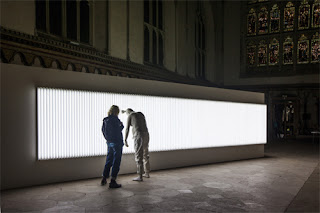 Emma Braso, Cultural Programme Curator at University for the Creative Arts, commented “We are delighted that Thorn has supported this event, the fluorescent lighting is a perfect choice of illumination for this exhibition as it creates a dramatic impact”.
Emma Braso, Cultural Programme Curator at University for the Creative Arts, commented “We are delighted that Thorn has supported this event, the fluorescent lighting is a perfect choice of illumination for this exhibition as it creates a dramatic impact”.
Thorn’s PopPack Batten incorporates a Tridonic PC T8 Pro ballast contained in a white stoved enamel outer to provide a colour rendering index of 80 and luminaire efficacy of 90 lm/w. The 1500mm luminaire is suitable for a wide range of applications, including unique exhibition displays such as the Sleepless Light Exercises.
church led · church lighting · led ligthting · led tubes · Novel Energy Lighting · poppack led · thorn led · thorn lighting · thorn poppack
iot · led lighting · lighting iot · Novel Energy Lighting · smart lighting · vatican lighting
1
Increased Dimming Compatibility With New Megaman GU10 Range
Comments off · Posted by admin in LED, LED downlights, LED GU10, LED Spots
Megaman, a leading LED lighting solution provider, is proud to announce the launch of a new selection of GU10 lamps that incorporate the company’s new Hybrid Reflector and U-DIM™ technology.
A new 4W (250lm) GU10 and 5W (360lm) dimming GU10, with 25,000 hours’ life, are now available in Megaman’s popular Economy range, whilst the Professional range sees the addition of a new 5.5W (500lm) and 7W (550lm) dimming GU10, both with 50,000 hours life.
All of the new dimming GU10’s incorporate Megaman’s revolutionary U-DIM™ technology as standard – making the lamps compatible with a wider possible range of existing dimmers, whether they are leading-edge or trailing-edge.
The new 7W addition to the Professional Range also features Megaman’s new Hybrid Reflector, providing excellent optics, high efficiency and precise beam control.
Megaman’s Economy range comes with 2 years warranty and the Professional range with 3 years as standard, extendable to 5 years through the website.
Buy Megaman GU10s from our website: www.novelenergylighting.com, or call us to discuss volume requirements: 0208-540-8287, email: sales@novelenergylighting.com
LED downlights · led GU10 · LED lamps · led spot · megaman 5.5w gu10 · megaman 5w gu10 · megaman 7w gu10 · megaman gu10 · Megaman LED · Megaman LED GU10 · u-dim
EU pledges millions to tackle IoT security threat. PLUS: Reykjavik turns off street lights for better aurora view. AND: US speedway becomes first to go all LED. Lux Today October 18 2016
iot · iot security · led stadium lighting · led street lights · Novel Energy Lighting · smart led lighting · smart lighting
25
Megaman Survey Shows Lighting Is Big Business For Hospitality Sector
Comments off · Posted by admin in LED, LED GU10, LED MR16 lamps, LED Spots
86% of hospitality professionals believe lighting plays a very important role in the customer experience. The findings of the survey, sponsored by Megaman, reveal that lighting is big business in the hospitality sector:
- only 1% of those surveyed think lighting is of no importance in the customer experience.
The findings show that good lighting encourages guests to stay longer and come back for more:
- 72% have left a venue earlier than planned because it was too brightly- or poorly-lit
- 74% have stayed longer than planned because the lighting made them feel relaxed and welcome.
Respondents thought a well-lit venue is:
- “somewhere that draws you in” (36% of respondents)
- “somewhere to spend time” (34%)
- “somewhere to go back to” (26%)
- none of the above (4%).
The survey revealed that respondents thought that upfront lighting refurbishment costs are less important than ambience. When making decisions on new lighting in a venue, hospitality professionals say that key considerations are:
- the effect and ambience of the new lighting (67%)
- the ability of staff to dim the lights (43%)
- energy bill/CO2 savings (31%)
- the upfront costs (23%).
Overall, 43% of those surveyed have been involved in a lighting refurbishment in their present or previous venue and said:
- the new lighting had been well received by customers – 84% of customers gave positive feedback on the lighting refurbishment
- good lighting boosts business – 91% think the lighting refurbishment had a positive impact on business in terms of an uplift in sales or profits
- education is still needed about the benefits of LEDs.
Only half of all hospitality professionals (49%) think a halogen lamp ban next year would be a positive change for them, while 36% say it would not affect them at all and 15% think that a ban will have a negative impact on them.
Fred Bass, managing director of Neonlite International, the brand owner of Megaman, said: “This survey supports what we are seeing in our day-to-day business within the hospitality sector – good quality lighting is appreciated and a well-lit scheme attracts customers who stay longer and spend more.
“However, the one area where I think we are at the cusp of a tipping point is in the understanding of the benefits of LEDs amongst the majority of those in the hospitality sector. Although half of those surveyed say that they think the banning of halogen lights and introduction of LED equivalents would be positive, there is still another half who are unsure.
“As more and more bars, restaurants and hotels experience the benefits of the latest in LED lighting technology, I believe we will see a dramatic sea-change in favour of LEDs.”
hopsitality led · hospitality lighting · led ambient lighting · LED downlights · led gu10s · LED lamps · LED spots · Megaman LED · Novel Energy Lighting

